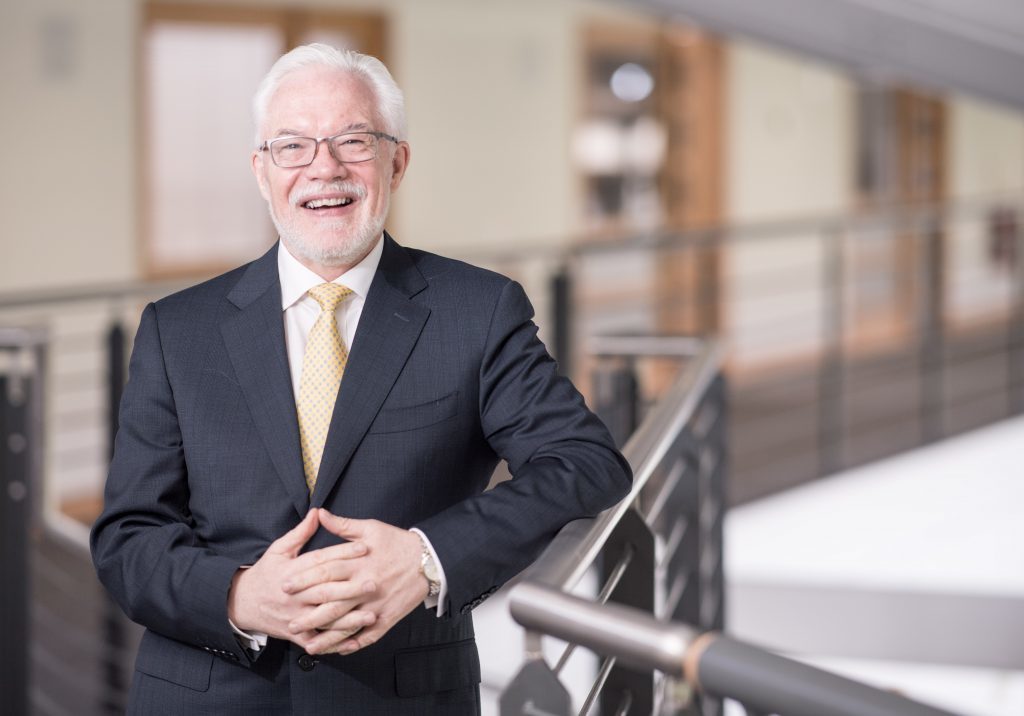
As I reflect on my tenure at The Industry Technology Facilitator (ITF) following the merger with the Oil & Gas Technology Centre (OGTC), it gives me a chance to consider the shifting landscape of oil and gas technology development.
While I cut my teeth in the realms of subsea, growing riser design specialist MCS into a global brand and leading the eventual sale to Wood Group, ITF opened my eyes to the wonderful diversity of our industry’s innovation efforts.
And it is perhaps in the subsurface sector that ITF had the most fundamental impacts. A significant number of projects in this arena have helped inform E&P decisions. It is greatly encouraging that OGTC is considering a subsurface solution centre and the projects and expertise that ITF bring will be immense.
The Full Wave Gamechanger project will soon relaunch with a third phase worth an additional £1.2million. Initiated through an ITF Joint Industry Project (JIP) with Imperial College London, £7.5million has already been invested to date by operators that have reaped rewards. It has enabled more than 100 well placement decisions amounting to $500million. Another subsurface-seismic project facilitated by ITF is gearing up to launch which is taking enormous amounts of data connected through super computers in the cloud to help process out the noise and find the jewel in the crown within the data. The objective is always to sharpen and improve the subsurface image crucial to successfully targeting hydrocarbons. The developer had worked with ITF on a JIP some 10 years ago and will now work with OGTC on the launch of this important piece of work. There are numerous other subsurface projects, which amount to a valuable legacy and one that continues to wield results.
Another project from the 220 ITF has facilitated that has made a significant impact for the industry is Airborne. The company received 2million euros through an ITF JIP and then went on to secure a further 10million euros from Saudi Aramco and 13million euros from existing shareholders for its thermoplastic composite pipe riser technology, which is now beginning to take the global industry by storm.
Yet another that has had fantastic engagement from across the industry is the SURF IM project, managed by Wood. The subsea integrity management knowledge forum continues to have support from 10 internationally located operators and is in its fourth phase – it’s a perfect example of collaboration when it works, giving oil companies an international stage to share knowledge about the latest technologies for subsea integrity.
Collaboration is not always simple. It requires engagement at a high level. Whilst the JIP is not always the most appropriate model, it’s something we shouldn’t risk abandoning. Whether initiated by an industry body or within a corporation, JIPs leverage much needed funding and spread the development risk. Importantly, the innovator gets vital input in many cases from five or so operators in the JIP, which can greatly shape the development stages of the technology. And it often paves the way for the investor community to get involved.
Part of the challenge is around getting the engagement of operators as business strategies change. In the past when the oil price was high operators have perhaps not been as strategic as they could have been with their investments. It’s easy to blame the process, but a JIP requires real commitment.
The amount of investment required to get technologies over the line is often many multiples of what ITF members have been able to invest. But, a vital part of that collaborative investment is that it helps get a head start and provides a really good signal to the investor community to get involved.
Another criticism of the JIP is that it takes too long. An active stewardship role helps to create a change of pace, and I’ve seen first-hand how that input makes a world of difference to a project’s success or failure.
We also need to look at the culture for innovation we have in oil and gas. It’s not just about having a good idea, it’s about the process that sits around it. Often the ideas come from scientists or engineers, but they can sometimes be quite ineffective about how they go about the innovation itself and are not always best placed to manage the business aspects.
We are an engineering dominated industry, I’m one myself, but does that automatically make us the best at innovation? By our very nature we can be anti-innovation because we’ve been trained to calculate, predict and be sure about an outcome. Our whole methodology is to double check and make sure it’s right. It’s very necessary of course, and it stops us making costly mistakes, but the culture is not the most suitable for blue sky thinking. The downturn has refocused attention on operational efficiencies, but it has also created a tendency for short term thinking. As important as it is to have the activity focused on incremental efficiency improvements, it’s also crucial to have the free-thinkers who are prepared to take a long look ahead into the unknown.
Looking to the UK technology development landscape, I’m confident that OGTC will have success. The model of having public sector support to stimulate and leverage private sector investment is the right one and we have already seen how that has worked well for other UK industry sectors such as automotive and aerospace. Added to this we have a strong regulator in the Oil & Gas Authority which also has a focus on technology and innovation. I’m certain that within this technology support landscape and the broader industry, the JIP and other collaborative investments will continue to play an important role in sustaining and extending our basin’s life for a long time to come.
Recommended for you
